What the US-China tech war means for the world’s future
The crucial battlegrounds in the war for tech supremacy
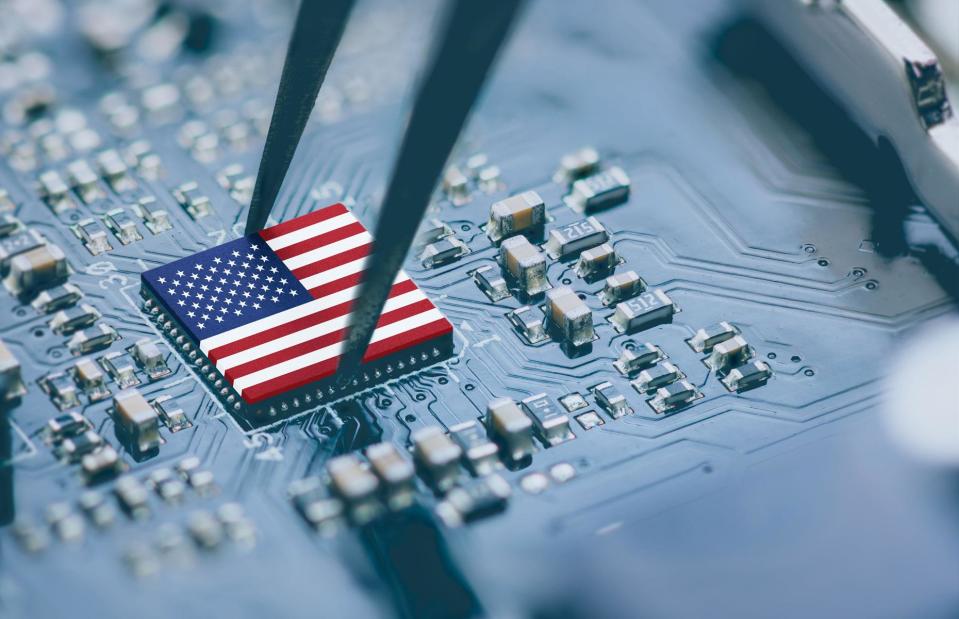
William Potter/Shutterstock
Racing to gain the upper hand in everything from semiconductors to AI and quantum computing, China and America are now locked in a full-blown tech war. The People's Republic is going all-out to topple its arch-rival as global innovation leader, while the US is fighting back by imposing strict export controls and punishing tariffs to halt Chinese development and keep its coveted crown.
As the two powers vie to control the future, read on to discover when the tech war started, how the adversaries are faring in key areas, and which nation currently has the edge.
All dollar amounts in US dollars, unless otherwise stated.
Made in China 2025 sparks the tech war

Ivan Marc Sanchez/Alamy
The origin of the tech war can be traced back to 2015 when Beijing unveiled Made in China 2025, its super-ambitious plan to make the People's Republic the global innovation leader and dominant force in high-tech manufacturing.
The plan was a wake-up call for US lawmakers, who were already concerned by China's increasingly assertive foreign policy. As Enrique Feás of the Elcano Royal Institute think tank has pointed out, tech primacy could eventually translate to military primacy.
The prospect of a belligerent China becoming the "tech top dog" sent shockwaves through Washington...
The tech war escalates under the Trump administration
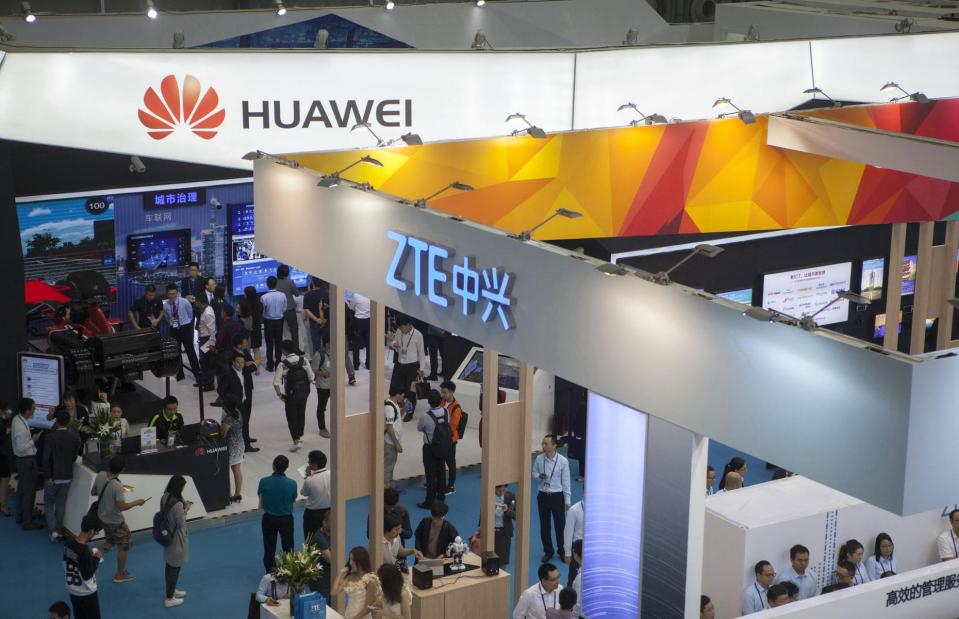
Imaginechina Limited/Alamy
The Obama administration got the ball rolling with an investigation into Chinese telecoms giant ZTE, which was accused of flouting sanctions and illegally exporting US tech to Iran and North Korea. But things escalated when Donald Trump became president in 2016.
The following year, ZTE was slapped with a huge fine. The Trump administration then turned its attention to Huawei amid claims of espionage and other national security fears.
China's 2017 National Intelligence Law brought these concerns to the fore. It requires Chinese companies and their subsidiaries operating at home and abroad to hand over data to the government if ordered to do so.
The Trump administration doubles down
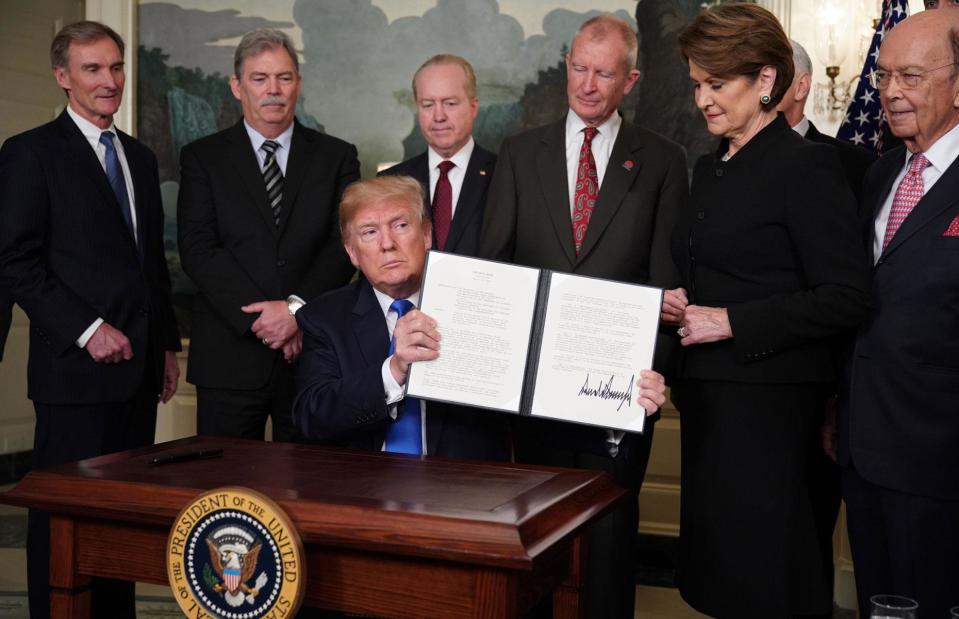
MANDEL NGAN/AFP via Getty Images
Huawei was later added to the Entity List to cut it off from US tech and effectively banned from participating in America's 5G network, along with four other Chinese companies, including ZTE. (The Entity List is a government-compiled document of foreign organisations, businesses, and individuals that America deems to be a national security concern; featured names can be subjected to restrictions and requirements.)
In 2018, President Trump imposed harsh sanctions on $60 billion (£47bn) worth of Chinese products, starting with solar panels, in a bid to challenge China's dominance in this vital area of green tech.
That same year, Trump took aim at the Chinese semiconductor industry, blocking the takeover of US chipmaker Lattice by a Chinese state-backed equity fund. The US also banned exports to Chinese chipmaker Fujian Jinhua Integrated Circuit Co, which it had accused of stealing American tech.
The tech war centres on semiconductors

IM Imagery/Shutterstock
Advanced chips are at the heart of the tech war, powering just about every emerging technology imaginable.
The Trump administration went on to impose export controls on foreign chipmaking foundries using US equipment, with a view to depriving China of the essentials it needs to create its own high-end semiconductors.
The controls came into effect in 2020 as Beijing boosted its tech investment by a whopping $1.4 trillion (£1.1tn). That same year, the US decided that China's biggest chipmaker, SMIC, was a military company controlled by the Chinese Communist Party and added it to the Entity List.
The Biden administration's tech offensive against China

Anna Moneymaker/Getty Images
President Biden has been even more proactive when it comes to hampering China's tech goals.
In addition to hiking up tariffs on Chinese green tech – including solar panels, electric vehicles (EVs), and lithium-ion batteries – the current US administration has extended restrictions on the export of semiconductors and related tech. That's all while shoring up the domestic industry with the $280 billion (£220bn) CHIPS and Science Act to ensure America stays on top.
And in the run-up to this year's presidential election, both President Biden and former POTUS Trump are talking tough when it comes to China.
Can America win the tech war?
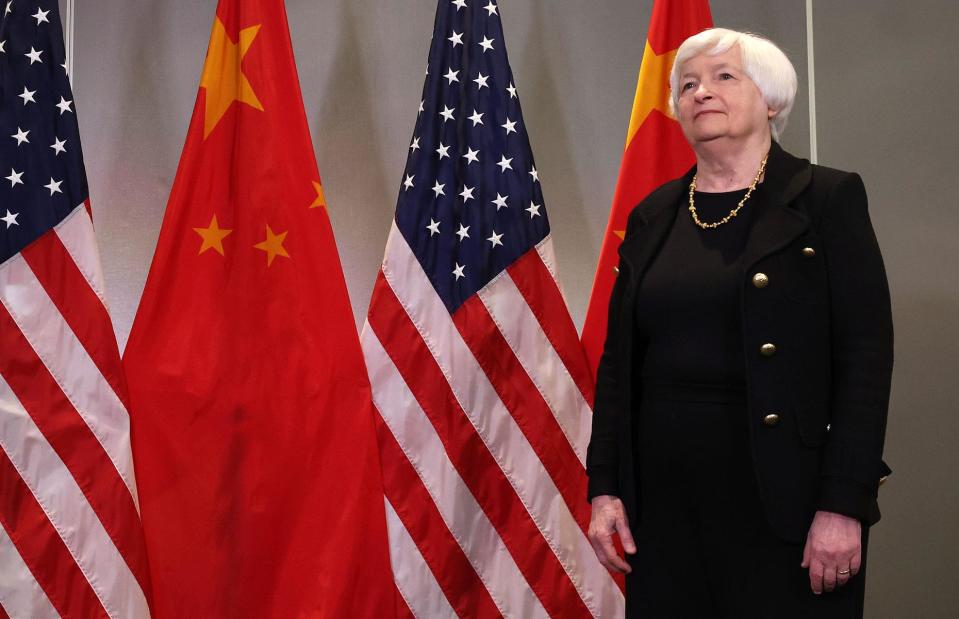
Justin Sullivan/Getty Images
The tech war is part of America's overriding effort to derisk from China, though as US Treasury Secretary Janet Yellen explained last year, a complete decoupling is "virtually impossible" and would upend global markets if it were to happen.
Analysts are split on whether the US can ultimately emerge victorious. While some experts believe China's dominance is inevitable, others have speculated it could fall into the dreaded middle-tech trap as America and its allies block access to the materials the nation requires to move up the value chains.
With all this in mind, let's look at where the two rival nations stand right now in the key tech areas...
Semiconductors: China

Ascannio/Shutterstock
In 2015, the Chinese government put semiconductors at the heart of its Made in China 2025 plan by setting homegrown chipmakers the ambitious goal of producing 80% of the nation's semiconductors by 2030. But that was before the US made moves to deprive China of the equipment it needs to make advanced chips.
The most high-tech semiconductors are made with extreme ultraviolet (EUV) lithography machines. These are manufactured by just one company, the Netherlands' ASML, which is blocked from exporting its precious equipment to China.
Chipmakers in the People's Republic are stuck with older deep ultraviolet (DUV) machines. However, these can still produce advanced semiconductors. Last year, for example, SMIC released a 7-nanometre chip, while Huawei is reportedly developing a 3-nanometre chip. If they manage it, it would be the most advanced chip currently available.
Semiconductors: America
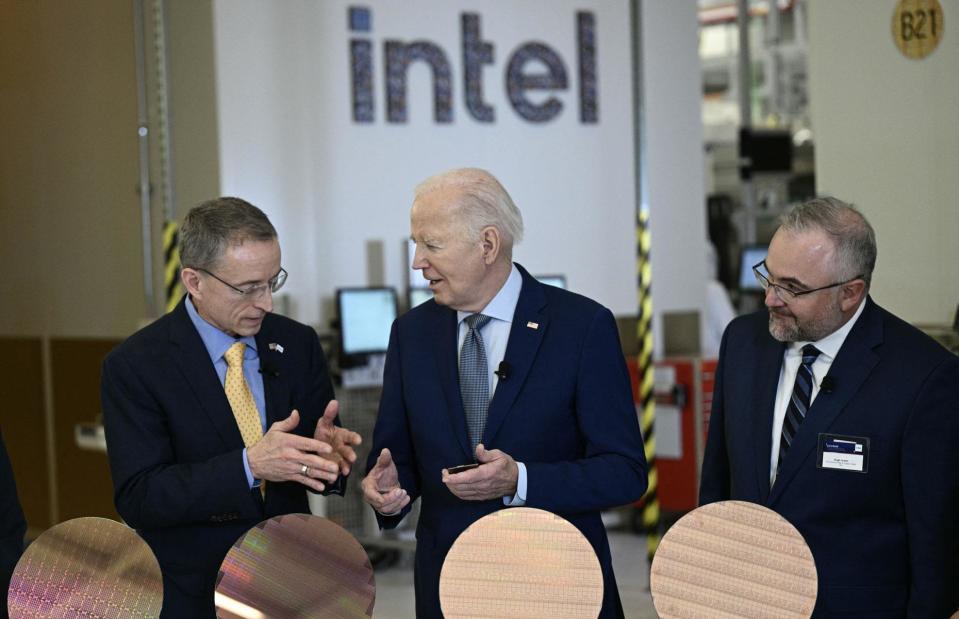
BRENDAN SMIALOWSKI/AFP via Getty Images
Once the global leader, the US has fallen behind the likes of Taiwan and South Korea when it comes to semiconductor production. However, it remains the global leader in chip design and innovation.
As we've mentioned, the Biden administration passed the $280 billion (£220bn) CHIPS and Science Act in 2022 with the goal of bringing manufacturing home, and the enormous funding injection is already paying off.
Unlike their counterparts in China, US chipmakers have access to the latest lithography machinery. Intel, which is one of the leaders in the field and is headquartered in California, is reportedly on schedule to launch a super-advanced 1-nanometre chip as soon as 2027.
China vs America: which country has the edge in semiconductors?

ANDREW CABALLERO-REYNOLDS/AFP via Getty Images
China's chipmakers will no doubt be looking on in envy. While the older DUV machines can produce high-end chips, the costs are eye-watering and the yields are low. Unless these firms can get hold of the latest EUV machines or some yet-to-be-invented alternative, they won't be able to produce advanced semiconductors affordably and at scale anytime soon.
Beijing recently pumped an additional $47.5 billion (£37.3bn) into the country's chip industry. But its advanced semiconductor sector is unsustainable without the most up-to-date equipment.
Some analysts have warned that the US government's actions are incentivising China to innovate and become self-sufficient in chips. Indeed, Chinese scientists are reportedly developing a giant particle accelerator-powered factory to produce advanced semiconductors. Yet the plan remains firmly on the drawing board. China may dominate critical minerals right now, but America is way ahead in the realm of semiconductors.
EVs: China

GREG BAKER/AFP via Getty Images
Last year, China accounted for around 60% of global electric vehicle (EV) sales and BYD, the nation's market leader, surpassed Tesla as the top-selling EV maker in the world.
The Chinese government bet big on EVs back in the early 2000s, ploughing massive sums of money into research and development. Lavish state subsidies and tax breaks for both manufacturers and consumers followed, and by 2017, China had overtaken the US in terms of EVs on the road.
Generous government support, fierce competition in other factors (such as the availability of cheap lithium-ion batteries), and low-cost raw materials like steel have all made Chinese EVs super-affordable. Exports have surged as a result, growing 70% in 2023 to reach $34.1 billion (£26.8bn).
EVs: America
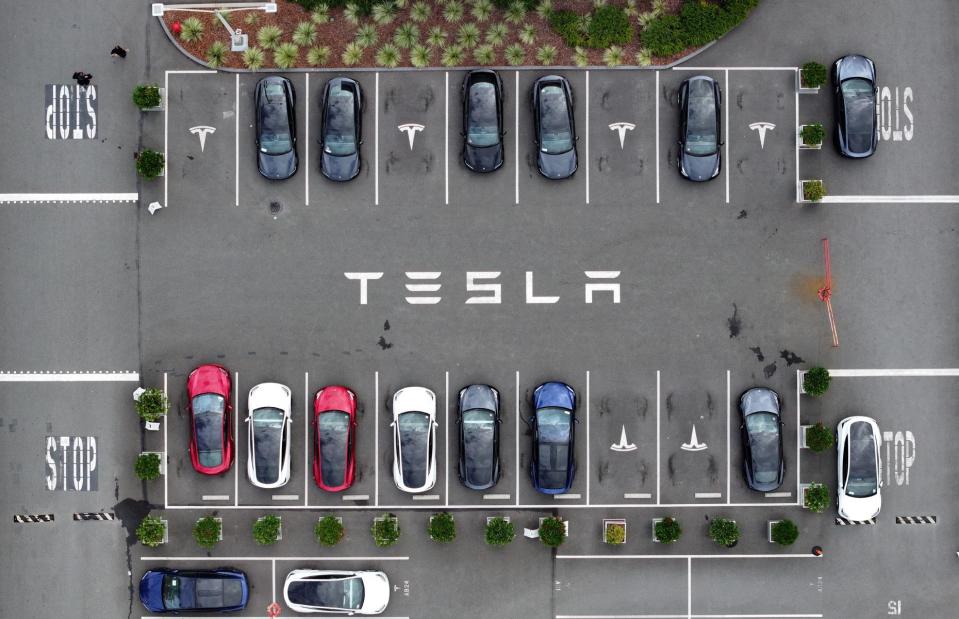
Justin Sullivan/Getty Images
A decade ago, the US had more than six times the number of EVs on the road than China. In addition to that, Tesla, America's shining star of the industry thanks to its pioneering highway-capable EV, was eclipsing Chinese manufacturers in sales.
Today, however, America is playing catchup with China. The US accounted for just 10% of global EV sales last year and only 8% of new cars sold In the country were electric, compared to 24% in China.
America's charging infrastructure is also far less developed, with only one charger for every 21 EVs. By comparison, China has one for every eight.
China vs America: which country has the edge in EVs?
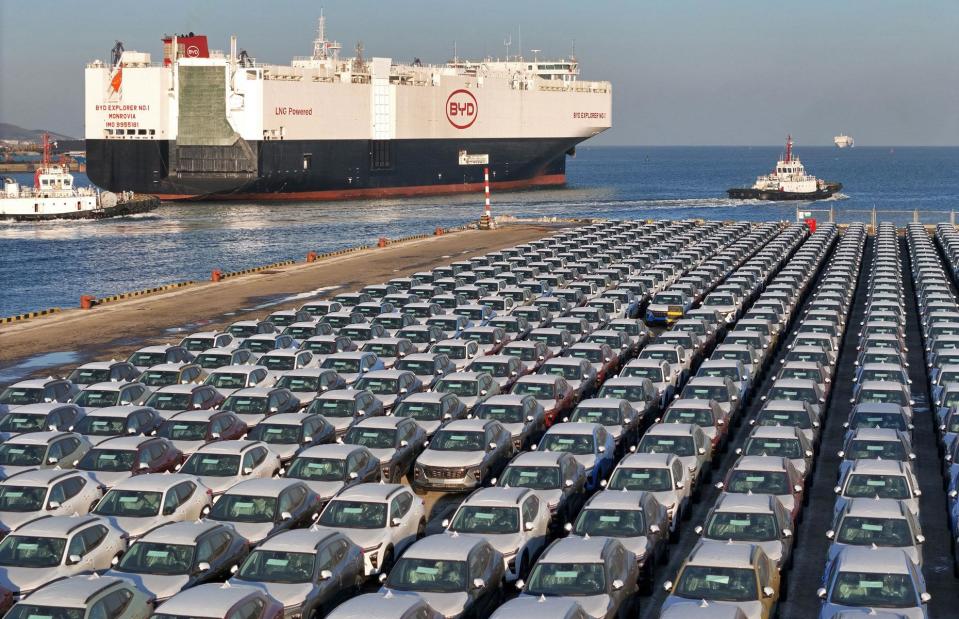
STR/AFP via Getty Images
The Biden administration has introduced subsidies to boost EV sales and recently announced a 100% tariff for Chinese EVs in a bid to persuade Americans to buy domestic designs.
But the US auto industry simply can't compete with China when it comes to cost, and the move has attracted criticism for depriving Americans of cheap EVs and potentially delaying the nation's green transition. EV sales are slowing down in the US, while former President Trump has said he'd remove all subsidies if he's re-elected in November.
On the flip side, China has produced a glut of EVs, far more than it requires domestically. The EU, UK, and Canada are all mulling over whether to follow the US and impose punishing tariffs on EVs from the country, so China may struggle to shift its bloated inventory.
However, China is now firmly established as the global EV leader. In fact, Chinese automakers have overtaken their US rivals in sales of all vehicles – not just electric – for the first time, according to a recent report from Jato Dynamics.
Lithium-ion batteries: China
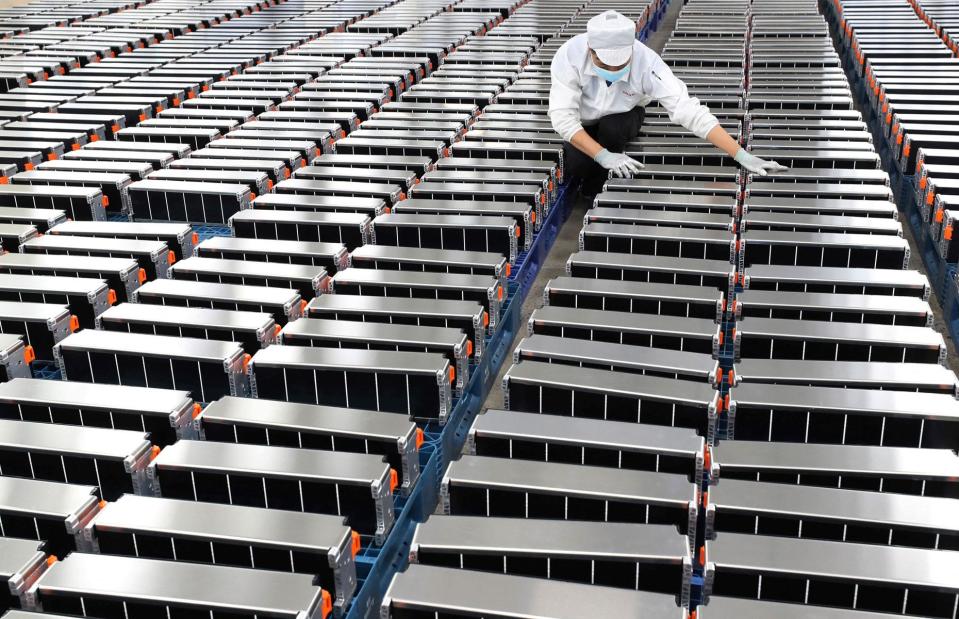
STR/AFP via Getty Images
Along with the development of the domestic EV industry, BYD pioneered China's lithium-ion battery sector and began producing rechargeable batteries in 1996.
With state assistance, the firm invested heavily in lithium-ion tech at the turn of the millennium and by 2004, China was producing 38% of the world's lithium-ion batteries, second only to Japan.
Today, China holds up to 95% of the global production capacity for each of the main components of the batteries, with three Chinese companies commanding just over half the global market. Along with leading the world in lithium refining, China is the planet's top producer of graphite, another mineral vital for lithium-ion battery manufacture.
Lithium-ion batteries: America
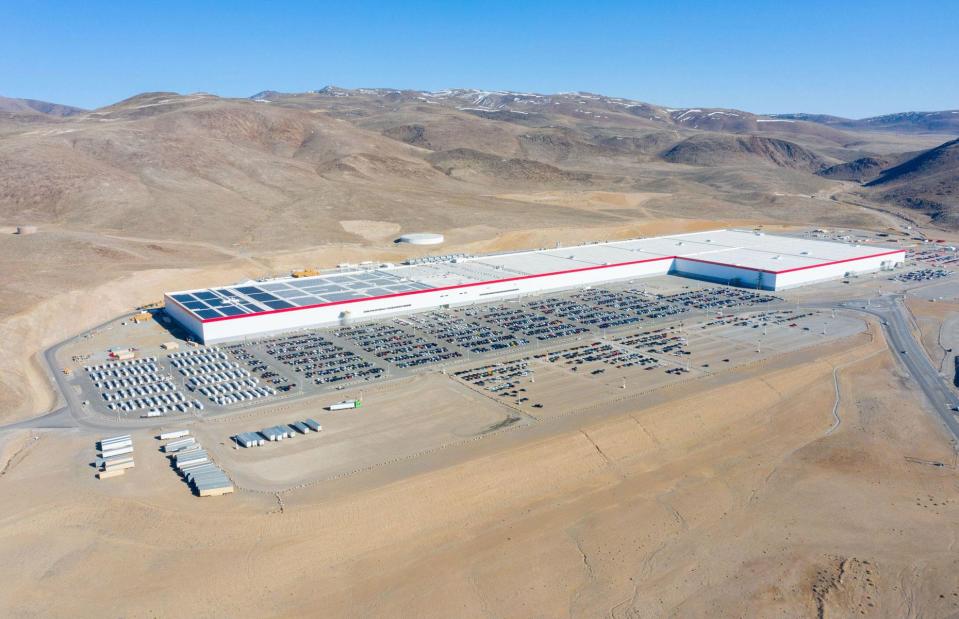
Jeremy Graham/Alamy
America's lithium-ion battery industry is tiny compared to China's.
North America has 11 lithium-ion battery processing factories in all, including Tesla's Megafactory in California and Gigafactory in Nevada (pictured). However, China accounts for 148 out of the global total of 200.
As we've already mentioned, the US is enormously dependent on China for lithium, as well as other critical minerals that go into making batteries. Moreover, 85% of the lithium-ion batteries Americans use come from China.
China vs America: which country has the edge in lithium-ion batteries?
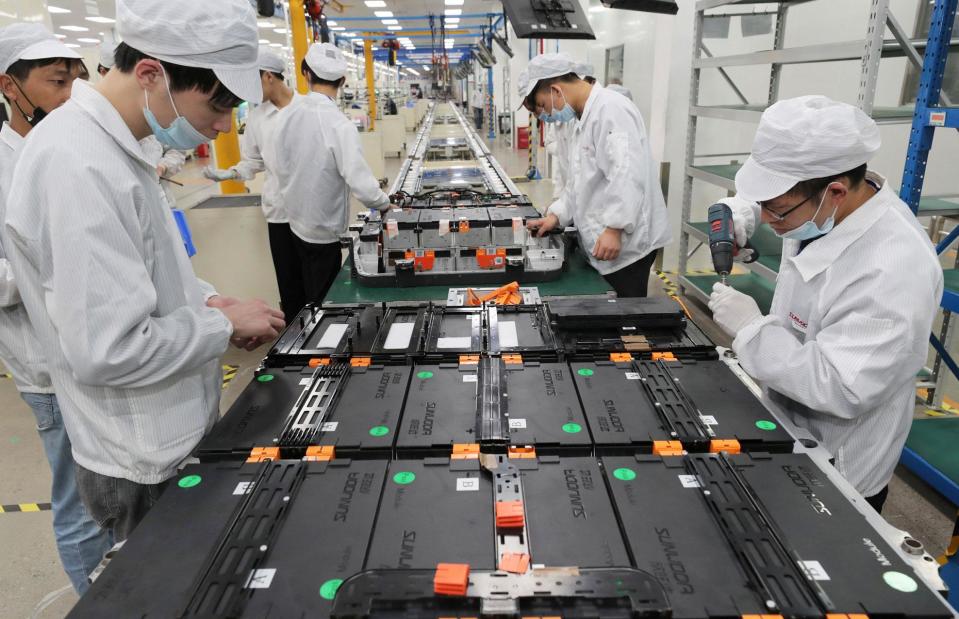
STR/AFP via Getty Images
Last November, the Biden administration announced a $3.5 billion (£2.8bn) plan to strengthen domestic lithium-ion battery production.
In addition, the tariff on Chinese lithium-ion battery imports was hiked from 7.5% to 25% in May. But this could be too little, too late...
Setting up a production facility can take several years and by that point, China's lithium-ion battery industry is likely to have raced ahead even further, driven by government support, colossal homegrown demand, and sheer innovation. For example, China's Qingdao Institute recently announced details of a faster-charging, longer-lasting battery cell that outclasses anything America has produced.
China looks set to dominate this particular field for some time yet.
Solar panels: China
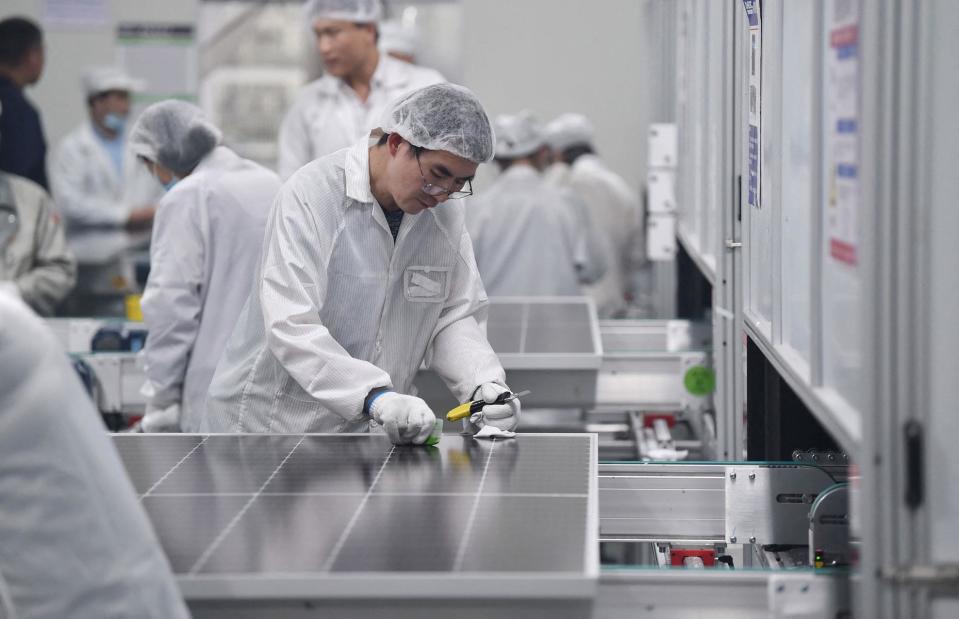
STR/AFP via Getty Images
Last year, the Chinese government invested $130 billion (£102bn) in its already thriving solar industry.
According to a study by global data provider Wood MacKenzie, the nation now holds over 80% of the world's manufacturing capacity. It also accounts for 90% of solar cell production worldwide, as reported by Bloomberg earlier this year.
China installed more solar panels in 2023 than the all-time total of any other country. The nation's solar photovoltaic (PV) capacity went beyond 500 GW in 2023, representing a sizeable 40% of the global pie, and now reportedly stands at a staggering 660 GW.
Solar panels: America
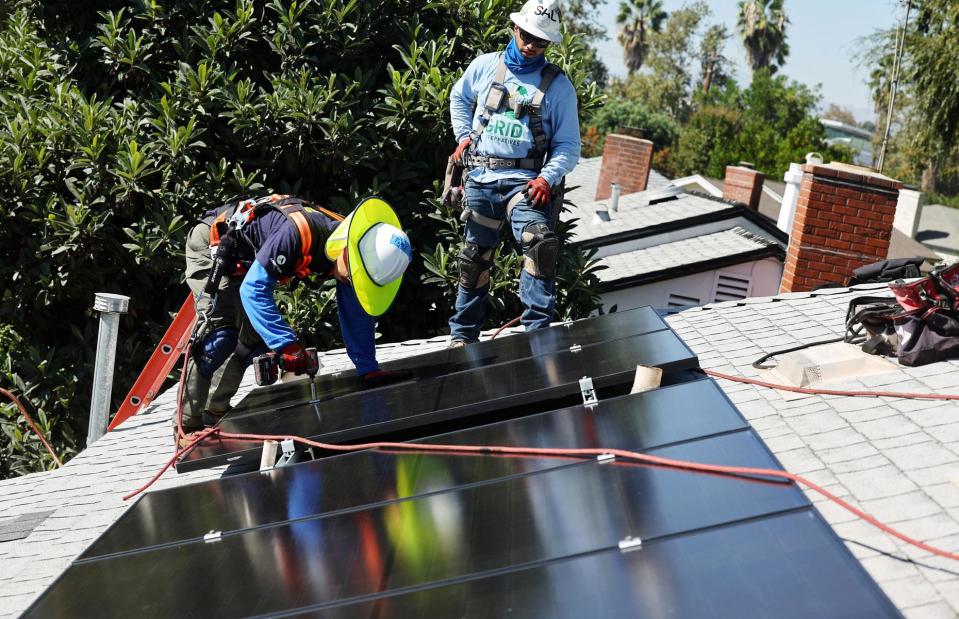
Mario Tama/Getty Images
The US comes a distant second in terms of solar PV capacity. Last year, America's solar power installations grew to 145 GW, which accounts for just 12% of the global total.
Homegrown production is modest. Last year, the US sourced a tiny amount of its solar panels directly from China and is currently reliant on Chinese suppliers operating in Southeast Asia, which provided most of the record 54 GW of the panels that the US imported in 2023.
China vs America: which country has the edge in solar panels?
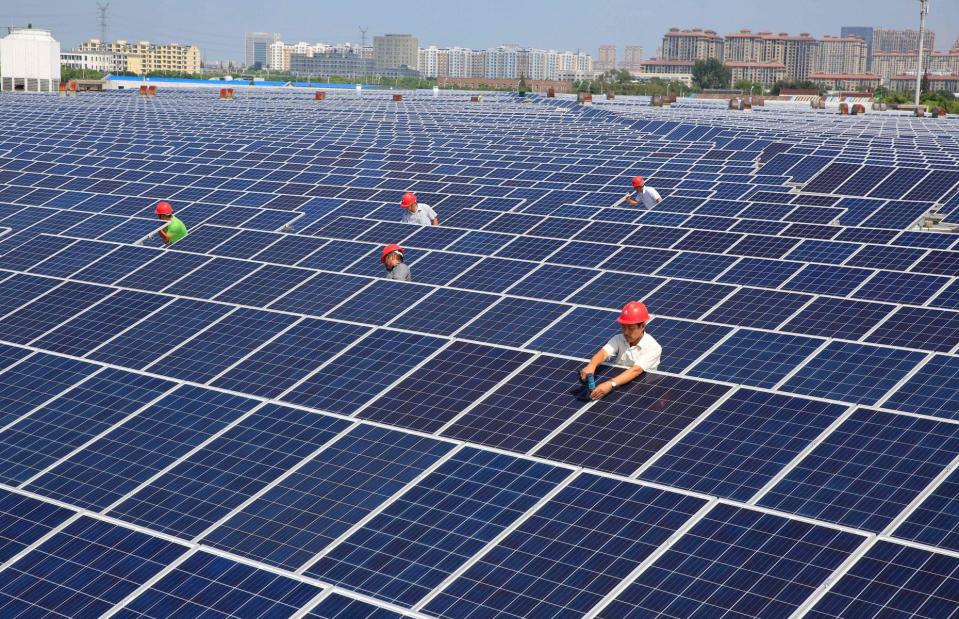
Imaginechina Limited/Alamy
The US government has increased the tariff on Chinese solar panels from 25% to 50%. It's also providing plum tax breaks for factory investments and solar panel production to stimulate domestic production. Ironically, an analysis from the Wall Street Journal has found that a quarter of the companies benefiting from the incentives are Chinese-headquartered.
This shows just how dominant China is in the global solar industry. Challenging its superiority is no mean feat and America will have to pull out all the stops to even come close to matching the People's Republic in this area.
However, as is the case with EVs, China may become a victim of its own success. Overproduction is leading to a flood of cheap solar panel exports, which may prompt other nations (aside from the US) to hike up their tariffs to protect their homegrown industries.
Generative AI: China

rafapress/Shutterstock
China has been a trailblazer in artificial intelligence (AI) for the past decade or so. But while the country has made astonishing progress in various AI fields and leads the world in facial recognition, it's lagging several years behind the US in one crucial area: generative AI.
The tech was pioneered by Microsoft-backed OpenAI, which released its game-changing ChatGPT chatbot in 2022. China has responded with several AI chatbots of its own, including Baidu's ERNIE Bot and the Tencent-backed Minimax, but they remain vastly inferior to America's wow-factor offerings.
Generative AI: America

Ju Jae-young/Shutterstock
The USA's dominance of generative AI is remarkable. Silicon Valley has developed the world's most extensive large language models (LLM), the tech that underpins generative AI, and America leads the world in AI chatbots. Since the launch of ChatGPT in 2022, numerous high-quality alternatives have arrived, including Jasper, Google's Gemini, and Anthrophic's Claude. In short: the sector is booming.
Last year, AI corporate and venture capitalist investment in the US hit $31 billion (£24bn) across 1,151 deals, with generative AI making up a substantial proportion of the grand total. By comparison, the equivalent figure for China was just $2 billion (£1.6bn) across 68 deals.
China vs America: which country has the edge in generative AI?

Leon Neal/Getty Images
China's development of generative AI has been plagued with difficulty, with America denying Chinese companies the advanced chips required to take their tech to the next level. Stricter regulations, high development costs and the government's censoring of sensitive content have also stifled innovation.
China's LLMs aren't a patch on America's; Mandarin internet sources, which the Chinese LLMs draw on, are poor compared to the wealth of English language content online.
In some ways, China is beating the US in terms of talent – the country is churning out AI engineers – but the chances of the People's Republic outshining the US in generative AI any time soon are very slim indeed.
Advanced robotics: China
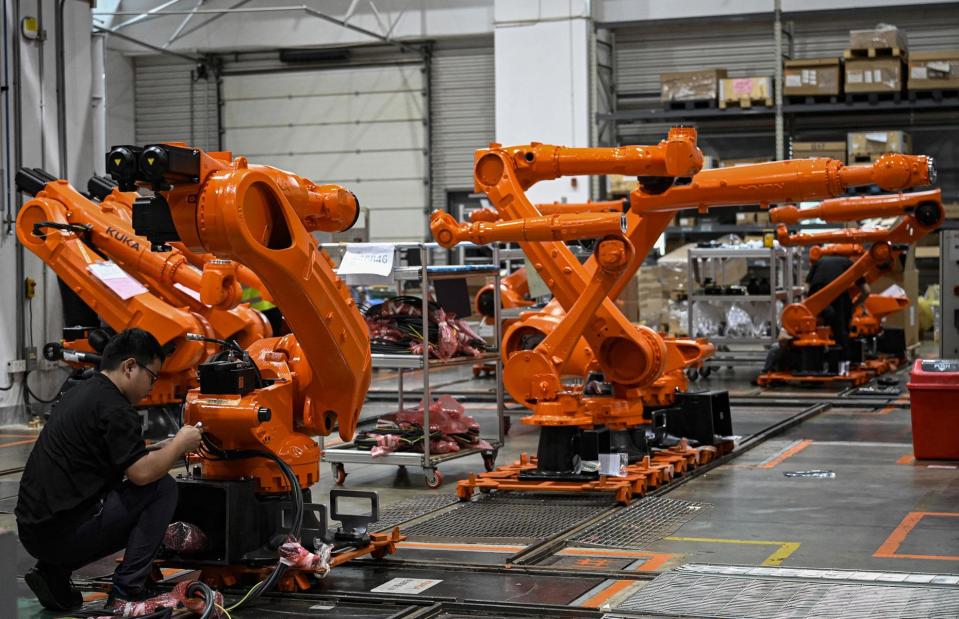
JADE GAO/AFP via Getty Images
With the world embracing automation and innovations such as AI driving progress in the field, advanced robotics is among the key technologies of the future. The Chinese government is investing heavily in the area as it seeks to become self-sufficient in robotics, with the goal of eventually dominating the global industry.
According to a recent report from the Information Technology and Innovation Foundation (ITIF), Chinese robotics firms currently rely on the leading robotics producers – Germany, Japan, and Switzerland – for components. The Chinese firms are largely copying Western tech rather than being innovative, while the domestic market is dominated by foreign firms, with Chinese companies making up just 25%.
Advanced robotics: America
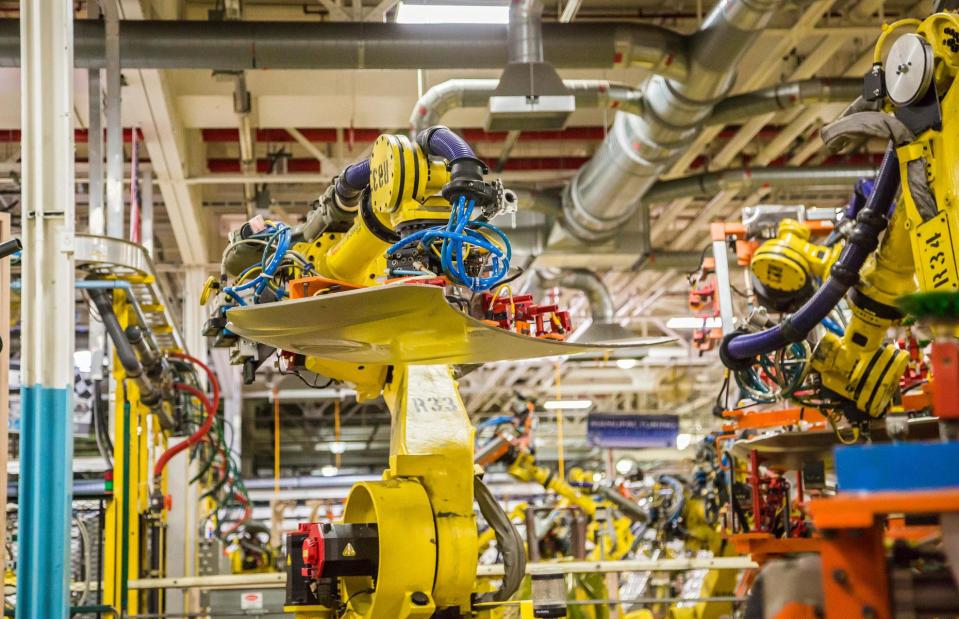
Jim West/Alamy
As ITIF has noted, the US invented robotics. However, while the country remains an innovation leader, it now tails behind Germany, Japan, and Switzerland in terms of production.
The US has no industrial robot foundries and, like their Chinese competitors, American robotics manufacturers depend almost entirely on foreign suppliers for components. As such, it's little wonder that US robotics exports account for just 5.4% of the global total, despite the fact American ingenuity in the field continues to wow.
China vs America: which country has the edge in advanced robotics?
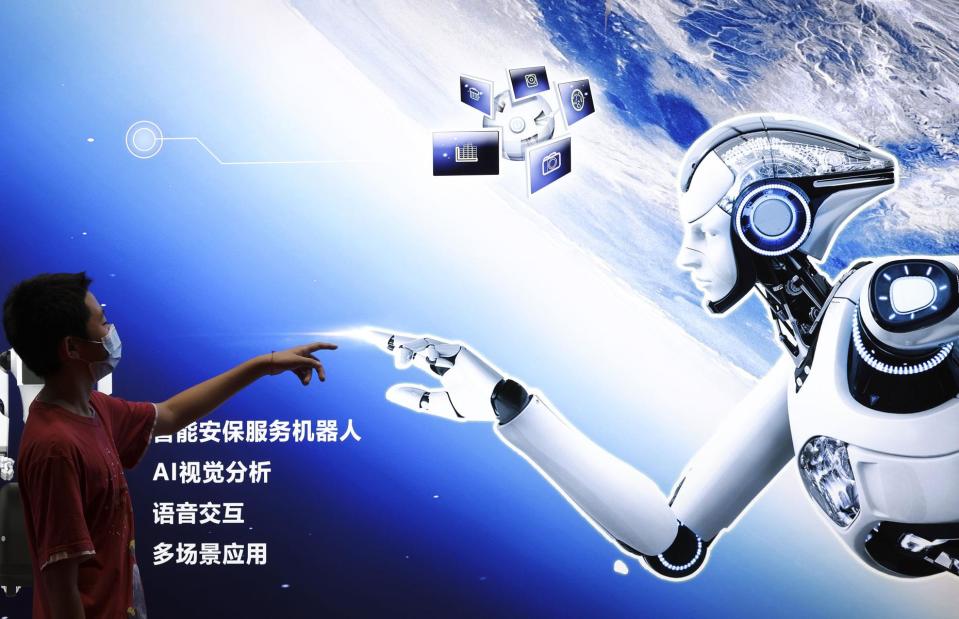
Lintao Zhang/Getty Images
America's efforts to deprive Chinese robotics companies of advanced semiconductors and other tech are likely to slow their progress. However, with state support so strong, it's only a matter of time before China matches the US on robotics innovation, according to ITIF.
Revealingly, the Chinese government plans to mass-produce humanoid robots as soon as next year. The US government has no such plans and isn't doing much to promote the domestic industry. A major push to support the sector, including educational investments and tax breaks for startups, is needed to ensure the US stays on top in terms of robotics innovation, though political support is lukewarm.
Public antipathy is likely a factor. Large investments in robots that could steal American jobs simply don't win votes, something China doesn't have to worry about.
Space race: China
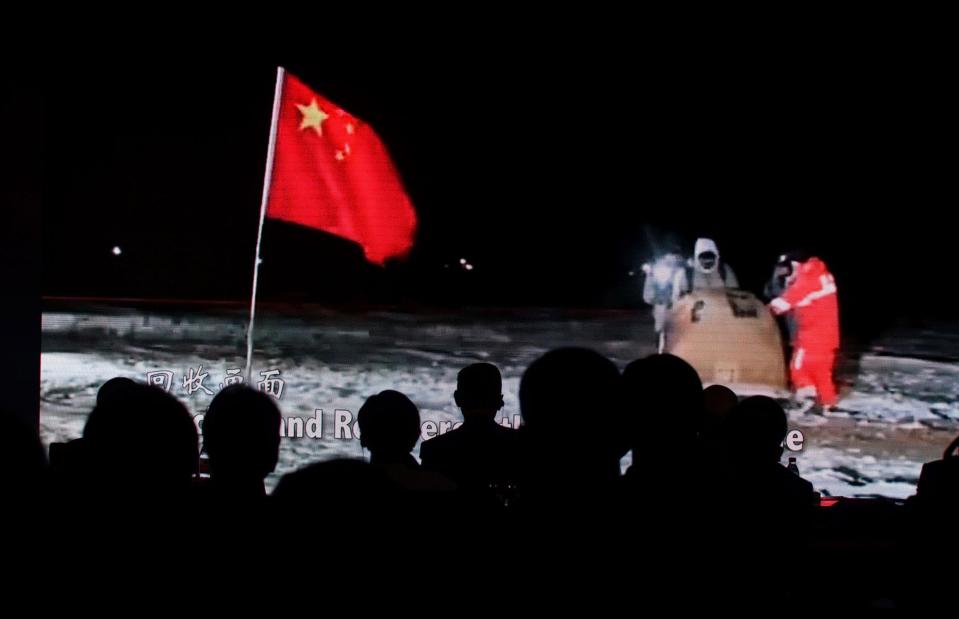
GREG BAKER/AFP via Getty Images
Two decades ago, China became the third country to send a human into space.
Since then, the nation's space program has gone from strength to strength. Its achievements include building a space station and pulling off a successful uncrewed Mars mission, as well as accomplishing the first landing on the far side of the Moon in June 2024.
Yet much of China's civilian space program is a front for a military program, NASA head Bill Nelson has warned, with the country having developed a terrifying array of counter-space weapons that are capable of taking out satellites and targets on the ground.
Space race: America
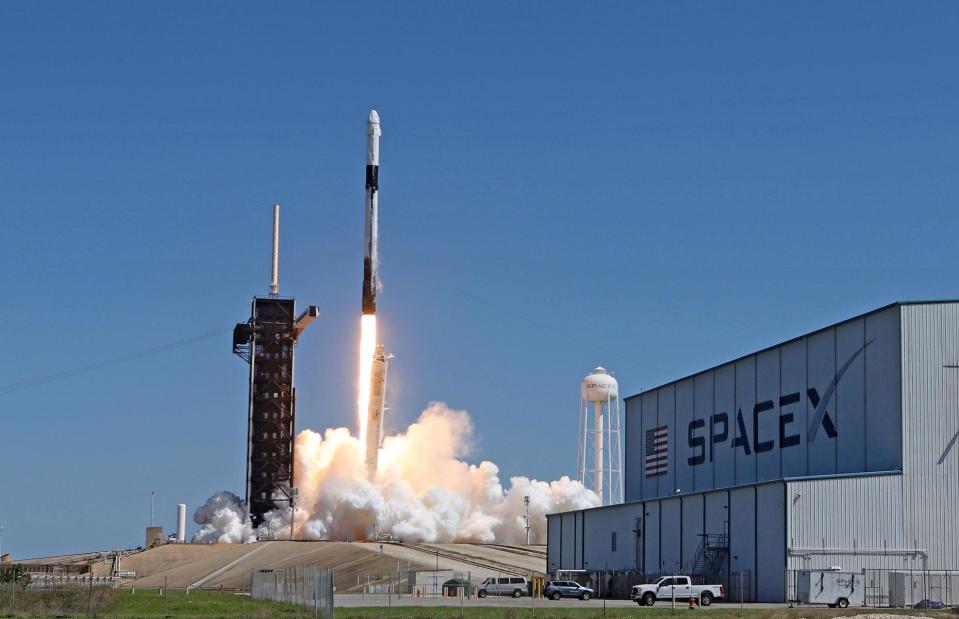
Red Huber/Getty Images
Officially, the US spends substantially more on its space program, forking out $73 billion (£57.3bn) last year compared to China's $14 billion (£11bn).
The country that landed the first human on the Moon has seven times as many active satellites in orbit than China, a testament to its long-standing position as the space frontrunner.
As well as having a lot more money to play with than China's National Space Administration, NASA and the US Space Force can tap into the ingenuity of SpaceX, Blue Origin, and other companies in the thriving private sector, which barely exists in the People's Republic.
China vs America: which country has the edge in the space race?

MARK FELIX/AFP via Getty Images
Washington is spending billions of dollars to deal with the threat posed by Chinese space weapons, as well as doing all it can to prevent Beijing from accessing the US commercial space sector and garnering intellectual property.
A key focus of the space race is the competition to control the resources of the Moon's South Pole. NASA has teamed up with friendly foreign space agencies and the likes of SpaceX and Blue Origin on its Artemis program, which has the goal of establishing a lunar base on the South Pole.
China and Russia are planning a rival base. According to The National Interest, the two countries are "lightyears away" from achieving the feat, so it seems America is almost a dead cert to win this one.
Quantum computing: China
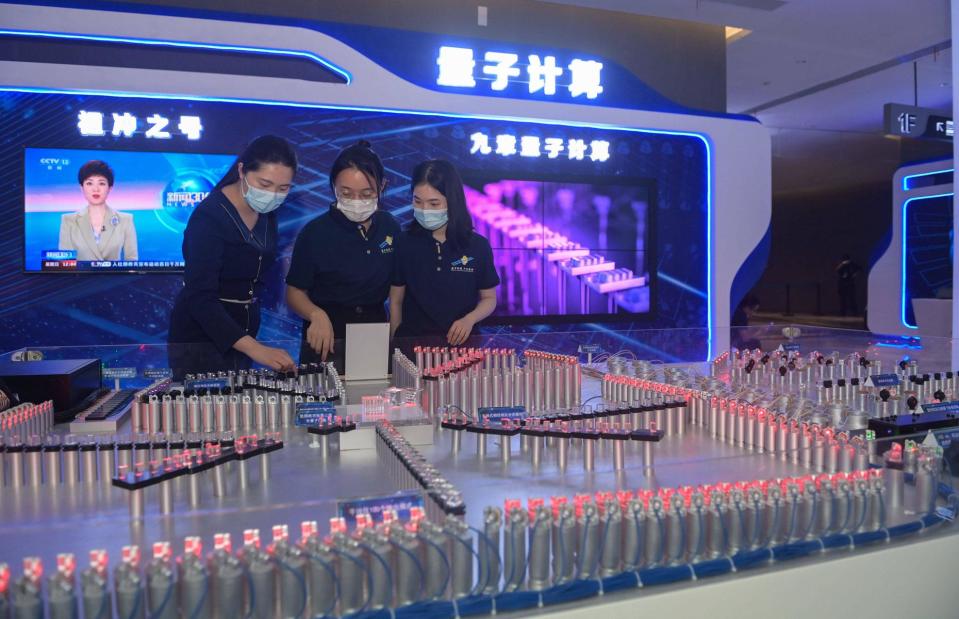
Imago/Alamy
Back in 2022, China was around five years behind the US in the quantum computing race according to analytics firm GlobalData. Fast-forward to 2024 and the analytics firm has revealed that the two countries are now "nearly equal".
The People's Republic "has made enormous strides in catching up with the US", says GlobalData's Isabel Al-Dhahir, with the government having pledged to spend $15 billion (£11.8bn) on quantum computing over the next five years.
Developing this tech is crucial as it has the potential to solve seemingly impossible mathematical problems, speed up R&D, bolster cybersecurity, take AI to the next level, and more accurately predict weather and climate change impacts. Most crucially, quantum computing could eventually destroy encryption, which would upend military and economic systems worldwide.
Quantum computing: America
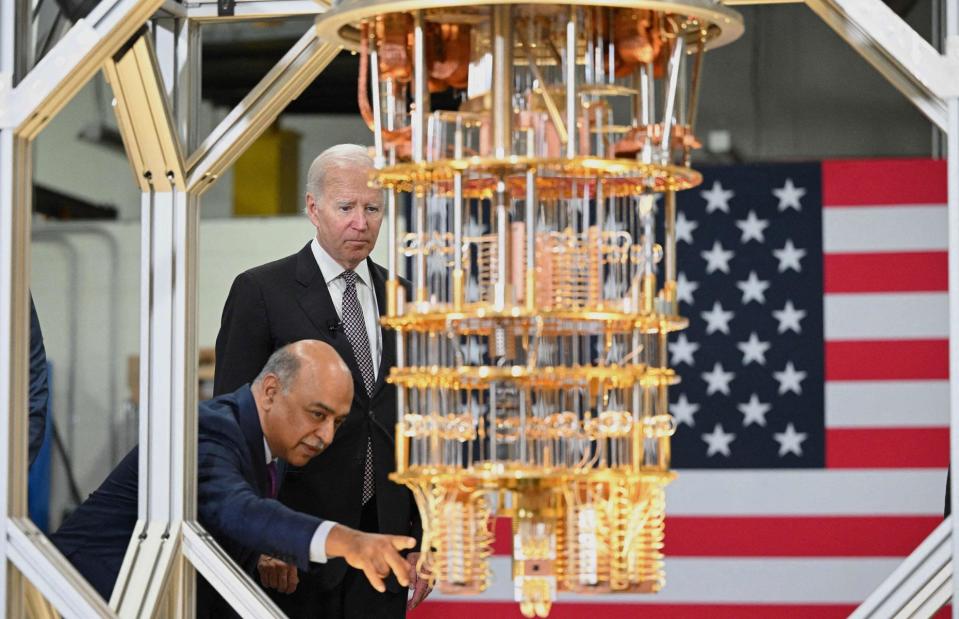
MANDEL NGAN/AFP via Getty Images
The US government is also pumping billions of dollars into quantum computing. As is the case with the space race, America is home to the leading private companies in the field such as Microsoft, Intel, and IBM. This gives it a pronounced advantage over China, which has concentrated its efforts in the public sector.
Consequently, the US has been able to maintain its position as the global leader in quantum computing innovation, despite the rapid development of the tech in China.
China vs America: which country has the edge in quantum computing?
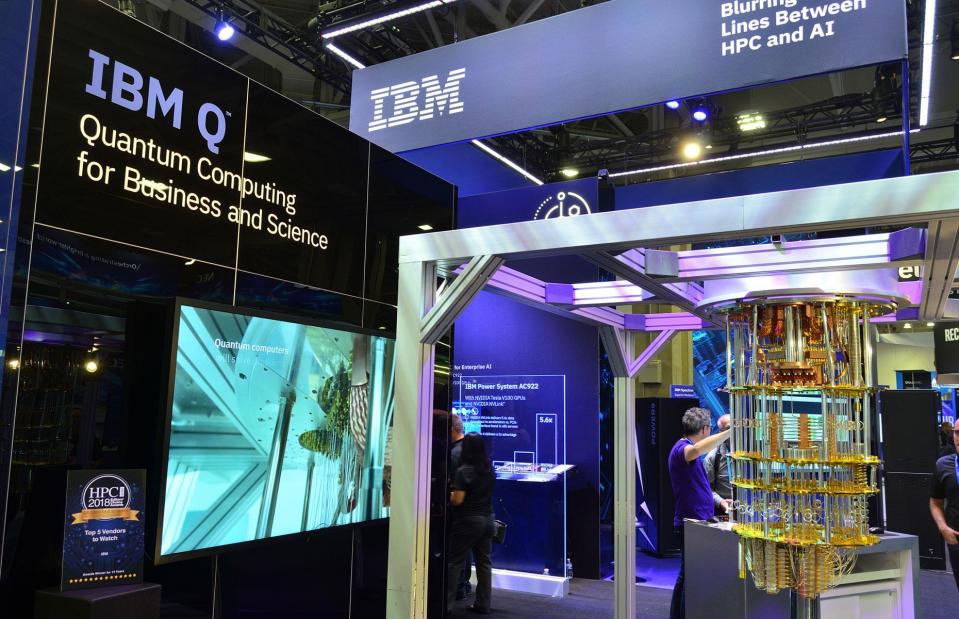
CCPang/Shutterstock
"Q-Day" is the term used to describe when quantum computers are finally able to crack public encryption systems. Given the potential implications of this momentous event, both superpowers are scrambling to be the first to perform the feat.
A paper published by a group of Chinese scientists last year sets out what appears to be a method to break the RSA encryption system used worldwide. Critics have poured scorn on the research, with University of Texas at Austin computer science professor Scott Aaronson claiming it would require a "miracle" to work.
As it stands, the development is more likely to come out of America and one of its homegrown private sector firms.
Medical innovation: China
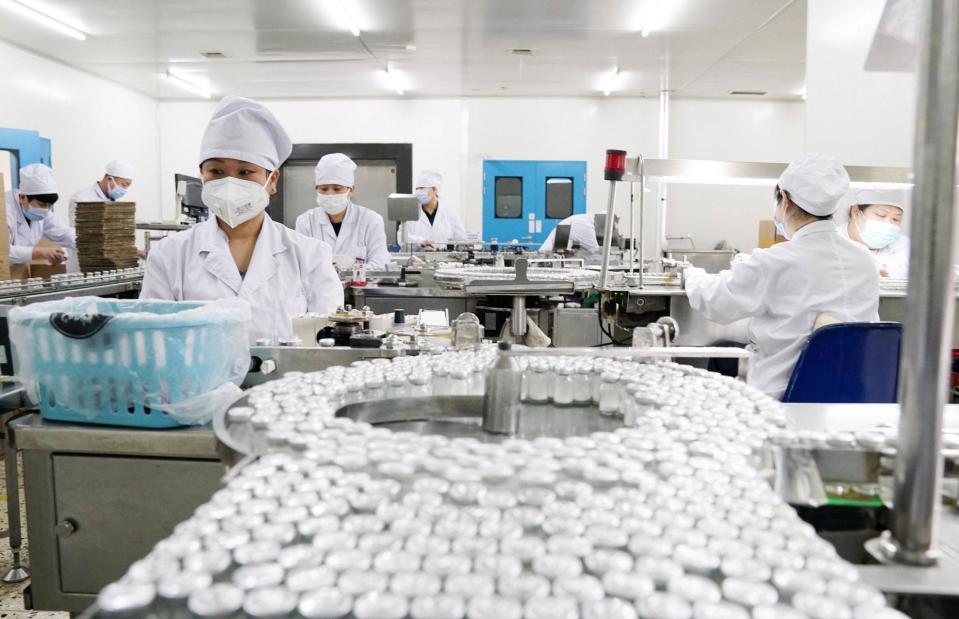
Imago/Alamy
In terms of medical innovation, China now ranks second in the world for clinical research according to the Nature Index, which tracks the research output of the planet's institutions and countries.
The People's Republic is home to the world's top government medical research institution, the Chinese Academy of Sciences. However, its real strength lies in drug manufacturing; China is the world's biggest drugmaker by volume and the leading producer of pharmaceutical ingredients.
Medical innovation: America

Marco Lazzarini/Shutterstock
The world's medical innovation leader, nine out of the top 10 healthcare research institutions on the planet are located in America. The nation has the highest number of Nobel laureates in chemistry and medicine, not to mention the finest medical schools, and leads the globe in new drug and medical device approvals.
America's superiority in the field of medicine came to the fore during the COVID-19 pandemic, when its leading pharmaceutical companies developed far more effective vaccines and treatments than China's drugmakers.
China vs America: which country has the edge in medical innovation?

Gorodenkoff/Shutterstock
As previously mentioned, China's strength lies in drug manufacturing. The People's Republic is America's fourth-largest supplier of medicines, which gives it a modicum of power, though the US government is taking steps to wean the country off Chinese-made drugs.
Yet try as it might, China simply can't compete with US medical ingenuity. America's edge is super-sharp in this area and China continues to fall short.
Social media: China
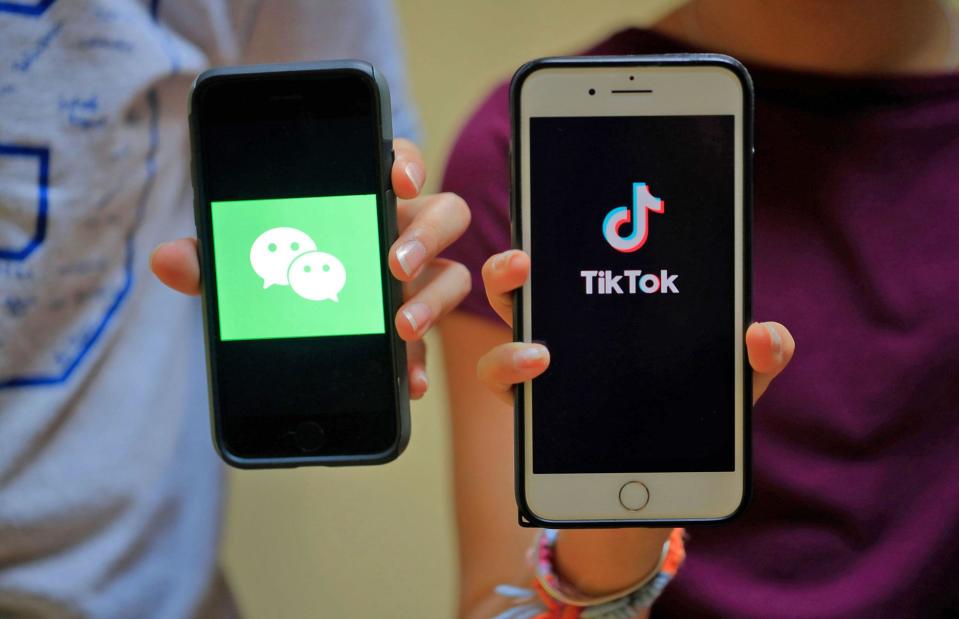
CNMages/Alamy
China's so-called "Great Firewall" blocks foreign social media companies from operating in the country, so the major players in the field are all homegrown. Among them are WeChat, Sina Weibo, and Douyin.
ByteDance's Douyin is the Chinese iteration of short-form video app TikTok. While social media apps like WeChat and Weibo are popular mainly within China, TikTok has conquered the world, with just under 1.6 billion monthly active users. It's the go-to social platform for Gen Zs and younger Millennials across the globe.
Social media: America

PA Images/Alamy
However, the planet's most popular social media platforms all hail from the US. Meta's Facebook is the global leader, with an incredible 3.1 billion monthly active users, which is more than one-third of the world's population.
Google-owned YouTube is next with 2.5 billion, followed by Meta's Instagram and WhatsApp, which each have two billion.
TikTok is next, making it the world's fifth-most popular social media platform. Other Chinese platforms only have modest global penetration.
China vs America: which country has the edge in social media?
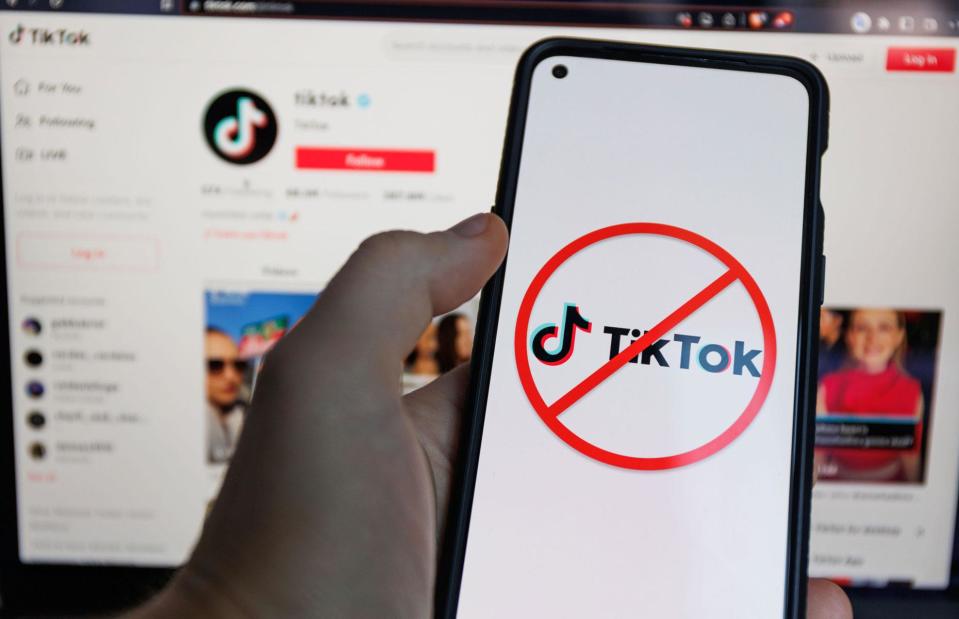
Rokas Tenys/Alamy
Citing national security concerns, President Biden signed an executive order in April that will ban TikTok unless ByteDance sells the platform within a year. This means the app's future in the US under Chinese ownership is in serious jeopardy, and it's possible that America's allies will follow suit.
With TikTok's global reach likely to narrow significantly, America will have cemented its dominance of social media worldwide and the soft power benefits this provides.
With many Western countries and other nations around the world (such as India) becoming increasingly averse to Chinese apps, the People's Republic can probably kiss goodbye to challenging America's social media supremacy in a meaningful way anytime soon.
China's critical minerals stranglehold
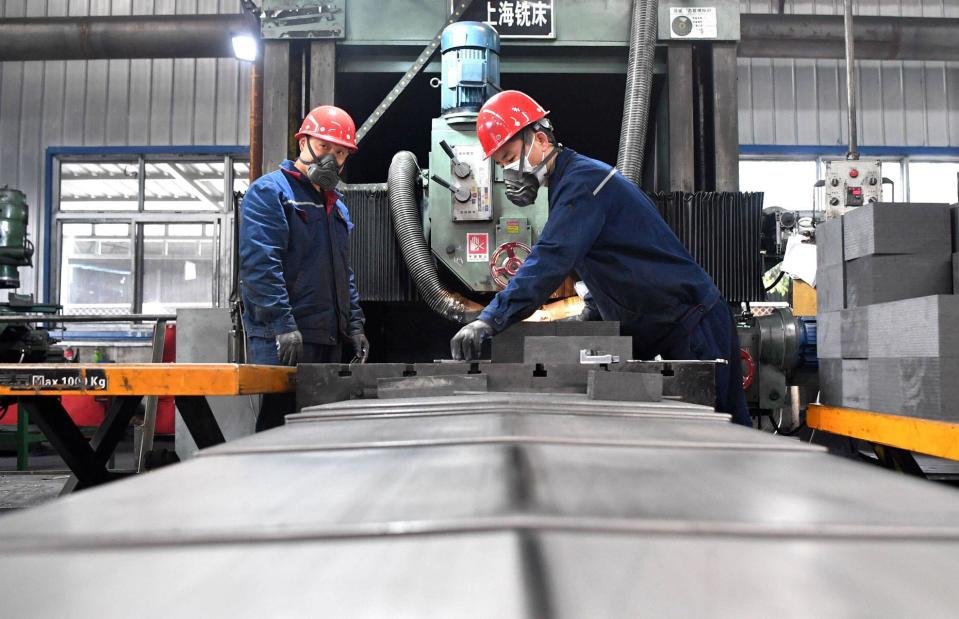
Imago/Alamy
Critical minerals such as lithium and cobalt underpin almost every form of 21st-century tech, including smartphones, EVs, and solar panels. China is currently the world leader in critical minerals, which gives the nation a distinct competitive advantage in the tech war. It's the top producer of numerous essential elements and number one in the world for critical mineral processing.
China refines 59% of the planet's lithium, 73% of its cobalt, 42% of all copper, and 68% of the world's nickel. The country also takes care of 85% of rare earths processing and controls 100% of the world's refined supply of graphite and more than 90% of manganese.
Concerns over Beijing's stranglehold reached a fever pitch last year when it restricted exports of gallium and germanium, key minerals for chipmaking and defence applications.
America's critical minerals mission

David McNew/Getty Images
Beijing's move appeared to be payback for Washington's tightening of its chip export ban. The US is 100% reliant on China for gallium and 50% dependent on the country for its supplies of germanium. In fact, over 80% of America's critical mineral supply comes from foreign sources, with China as the leading import source.
The Biden administration is going all out to ramp up domestic production and diversify foreign sources with a focus on friendly nations. However, the US is in a very vulnerable position.
Past efforts to reduce the country's reliance on China for critical minerals started in 2012 under the Obama administration, yet have borne little fruit. Shown here is the 45,000-acre Bristol and Cadiz Dry Lake lithium brine project, located in the Mojave Desert, California.
China vs America: which country has the technological edge overall right now?

William Potter/Shutterstock
China is making impressive progress across a range of 21st-century tech and now dominates fields such as EVs and solar panels. Its dominance in the field of critical minerals is also enviable. However, the US reigns supreme when all things are considered.
America ranks third on the World Intellectual Property Organization's 2023 Global Innovation Index, while China didn't even make the top 10, languishing in 12th place. Though some analysts think the People's Republic will eventually outshine the US, the Asian nation certainly has its work cut out if it truly wants to challenge America's tech supremacy.
Now find out what's behind China's astonishing gold-buying spree

 Yahoo Finance
Yahoo Finance 